
 Flash News
Flash News
Rama received 84 mandates, EU ambassador: Implement reforms, there is no one to blame
On a new type of electoral state and a path out of its regimes
He did not secure the mandate of the deputy, Alimehmeti speaks: The electoral system should be erased, it produced internal competition
Diaspora votes, counting process for political entities in 12 districts concludes
Government media invents the article about the "reaction of DP figures" against Berisha & LaCivita. The author does not exist and the text is a product of ChatGPT (whichs says it's fabricated)
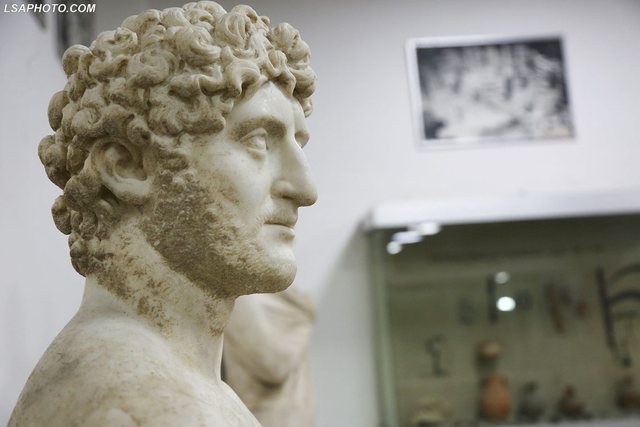
The investment for the restoration project of the Archaeological Museum of Durrës has entered its final phase, although it is not known whether the exhibition will be ready for the new tourist season.
The restoration of the Durrës Museum is being carried out with a fund of 348 million lek donated by the European Union, but the intervention period has exceeded three years.
The delays have also created difficulties for the work of employees of the Institute of Archaeology, part of the Academy of Sciences.
Since 2008, the Durrës Museum, as well as the Museums of Apollonia and Butrint, have been subordinated to the Ministry of Culture.
“The Institute of Archaeology and the Academy of Sciences are responsible for the scientific side of this Archaeological Museum,” the Academy explained, adding that “the Ministry of Culture has missed the deadlines for the reconstruction of the Museum.”
"This has created difficulties in the work of Durrës archaeologists and the maintenance of this city's archaeological funds," the Academy of Sciences emphasized.
Archaeologists are dissatisfied with the solutions that have been offered for the preservation and study of around 17,000 objects that make up the archaeological funds of Durrës.
As part of the restoration, they have been housed in a temporary silo built behind the Museum, which lacks the necessary surface area for arranging the objects, and also lacks the conditions for the scientific activity of archaeologists.
According to archaeologist Brikena Shkodra, archaeological sites have specific conditions for arrangement, preservation, restoration and study.
"On what criteria is a silo of minimal size built, which will essentially have to house at least 17,000 archaeological objects and at the same time provide working spaces for archaeologists," she asked.
"What will be the fate of the archaeological funds and scientific research spaces in Durrës," Shkodra added.
This is not the first time that archaeologists have sought a solution for housing the archaeological fund.
“We requested the support of the city municipality to be located in certain sectors near the Martyrs' Mausoleum and the Children's Cultural Center,” recalled Prof. As dr. Eduard Shehi.
"Our efforts were unsuccessful even when we proposed returning the former Archaeological Museum building to its original function," he added.
The archaeological funds of Durrës began their existence as part of the former Museum of Nature, founded by Vangjel Toçi, who collected objects that were previously part of a small local museum and enriched them with new findings.
They subsequently became part of the Archaeological Museum, and subsequently came under the administration of the former Durrës Archaeological Center, an integral part of the Institute of Archaeology of the Academy of Sciences until 2007.
During this phase, the Archaeological Fund of Durrës has experienced a significant quantitative growth, representing the largest archaeological wealth of Albania.
Taken together, the Foundation Fund (around 17,000 objects) and the Research Fund (thousands more), constitute an extraordinary treasure, discovered and preserved over decades by archaeologists of Durrës and the Institute of Archaeology.
Around the 1980s, construction began on the new building of the Archaeological Museum of Durrës (the current building), with the idea of transferring the exhibition and the archaeologists' offices there. While the archaeological funds were expected to remain in the premises of the old Museum, which is located only 300 meters from the new Museum.
In 1999, the original building of the Archaeological Museum was returned to its owners.
The chests of small objects were arranged on the second and third floors of the new building, in spaces intended for exhibition. While the stone objects were placed without criteria for storage and preservation in the courtyard.
The construction process of the new building was partially finalized in 2003 with the inauguration of the museum exhibition only on the first floor of the building. While the second and third floors of the current building of the Archaeological Museum were used as functional, storage and preservation spaces for archaeological funds.
The 2007/2008 reform of the scientific/educational system sanctioned the separation of archaeological funds from the Archaeological Museum. Since that year, the Archaeological Museum has become part of the regional structure of the Ministry of Culture in Durrës, while the archaeological funds remained under the administration of the Institute of Archaeology in Tirana.
This administrative transformation paved the way for the implementation of the project for the reconstruction and revitalization of the Archaeological Museum building, the realization of which was hindered by the presence of archaeological funds.
Again, it was requested that the spaces on the second and third floors be emptied of archaeological treasures and removed from the building, and not only that, but it was also strongly requested that part of the research funds be buried, as worthless, according to the expertise of the restoration designers.
The resistance of archaeologists in Durrës to allow the burial of archaeological treasures at least forced the construction of a silo, only 140 m2. But this building was too small to house all the objects in the fund.
Prof. As. Dr. Brikena Shkodra recalled that 10 years ago, thanks to economic assistance provided by colleagues and cooperating institutions such as the German Archaeological Institute of Rome and the University of Lille, two containers were provided for the arrangement of part of the collection remaining outside.
"For 3 years, archaeologists have been working in expired containers that have become a haven for rodents in the surrounding canals," Shkodra emphasized./ BIRN
Latest news

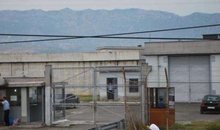
Prisoner ends life in Fushë-Krujë prison
2025-05-19 10:57:03

Diplomats: EU and Britain have agreed to "restart" relations
2025-05-19 10:40:02
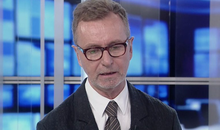
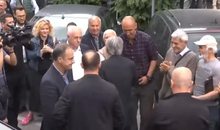
SPAK's measure, Berisha appears before the Special Prosecution Office
2025-05-19 10:18:05
Fier/ 23-year-old man injures his father with a gun
2025-05-19 10:11:21
IHP: 39.1% of Albanians suffer from hypertension
2025-05-19 10:03:34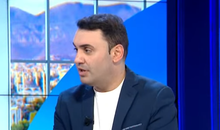
Këlliçi: The US and the US have not reacted to Rama's fourth term
2025-05-19 09:56:02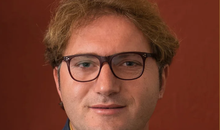
On a new type of electoral state and a path out of its regimes
2025-05-19 09:55:00


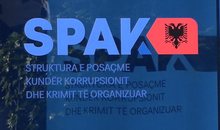
Suspicions of electoral crimes, SPAK and BKH conduct investigations in Elbasan
2025-05-19 09:04:31
GJKKO pritet të vendosë nëse Berisha dhe Malltezi do të kalojnë për gjykim
2025-05-19 08:59:47
Former US President Joe Biden diagnosed with cancer
2025-05-19 08:51:29
Eurostat: Albania leads Europe with almost half of the population in poverty
2025-05-19 08:35:27
Pro-European Nicusor Dan elected president of Romania
2025-05-19 08:24:10
Horoscope, what do the stars have in store for you today?
2025-05-19 08:11:49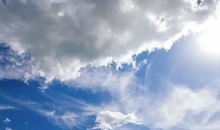
Clear weather, what are the temperatures expected to be during the day?
2025-05-19 07:58:47
Morning Post/ In 2 lines: What mattered yesterday in Albania
2025-05-19 07:44:50
Horoscope signs that will be lucky this week
2025-05-18 21:43:57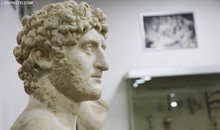
Albania's archaeological wealth remains homeless
2025-05-18 21:13:12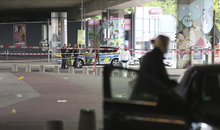
Knife attack in Germany, 5 people injured
2025-05-18 20:53:56

Arbana Osmani returns to television, here's where we'll see her
2025-05-18 20:15:24
PLAN A: Democrat in heart, democrat in mind, democrat in the world
2025-05-18 19:50:49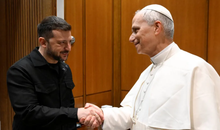
Pope meets with Zelensky after inauguration Mass
2025-05-18 19:26:03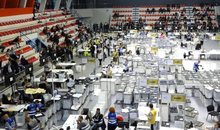


Pope Leo calls for unity, vows not to be an "autocrat"
2025-05-18 18:26:51

Monika Kryemadhi comes as a film actress, shares footage from the filming set
2025-05-18 17:49:01
Video/ Incident in MMA, Albanian athlete loses consciousness after 100 punches
2025-05-18 17:30:14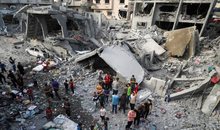
Israel announces new offensive in Gaza
2025-05-18 17:13:11



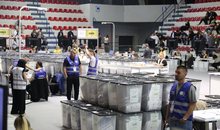
The counting of diaspora votes in Berat and Vlora is completed
2025-05-18 15:51:27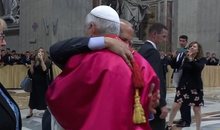
Pope Leo XIV "broke" protocol, hugged his brother at the inauguration ceremony
2025-05-18 15:22:47

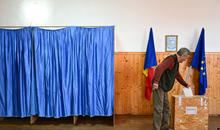
High Romanian turnout in elections that could deepen divisions in the EU
2025-05-18 14:30:03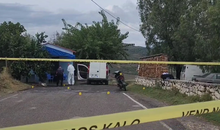

Does the diaspora vote reflect the opinion of immigrants?
2025-05-18 13:47:25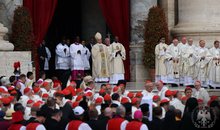
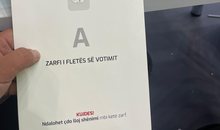


Video/ Footage goes viral, Erdogan forcibly grabs Macron's finger
2025-05-18 12:12:07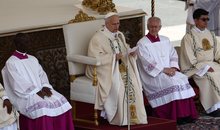
Pope Leo XIV's inauguration mass begins in St. Peter's Square
2025-05-18 11:48:16


Foreign exchange, May 18, 2025
2025-05-18 10:43:26
"Rivalry with the Dollar!" The Economist: Can the Euro Become a Global Currency?
2025-05-18 10:28:45
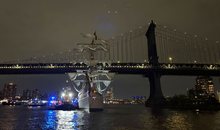
Mexican navy ship crashes into Brooklyn Bridge in New York, 2 dead, 17 injured
2025-05-18 09:37:43
With only two votes difference, Xhaçka takes Gjylameti's mandate in Tirana
2025-05-18 09:10:02
With clear skies and passing clouds, here's the weather forecast for today
2025-05-18 09:02:45
Horoscope for today, May 18, 2025
2025-05-18 08:35:57
Albania shines on the Eurovision stage, ranks 8th
2025-05-18 08:21:33
Morning Post/ In 2 lines: What mattered yesterday in Albania
2025-05-18 08:02:35
Knife wound in Durrës, perpetrator on the run
2025-05-17 21:59:13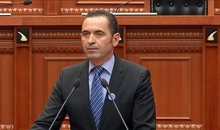

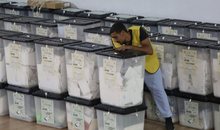
Fier closes the count: These are the MPs who win the mandate
2025-05-17 20:40:04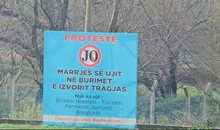
When politics "ditches" even the water source, Tragjasi surrenders to the SP
2025-05-17 20:16:27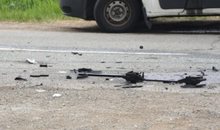


After months of chaos, Romanians prepare to elect president
2025-05-17 19:09:39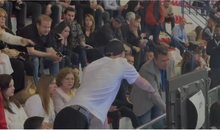
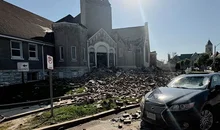
Deadly tornado hits two US states, killing 20
2025-05-17 18:18:09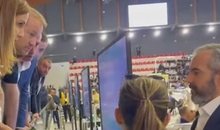

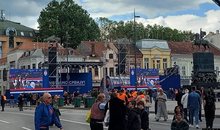
Vučić at rally in Niš, Serbian students organize protest in Subotica
2025-05-17 17:03:26
Iran's Supreme Leader Rejects Trump's Comments on Nuclear Program Proposal
2025-05-17 16:41:36
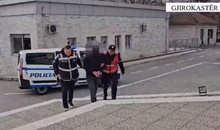

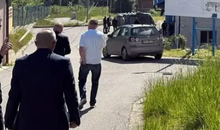
Risk of ethnic tensions, EU criticizes actions in northern Kosovo
2025-05-17 15:31:34
Manipulation of Diaspora votes in Greece/ Minutes prove distortion of results
2025-05-17 15:14:53
Heavy traffic in Tirana, long lines of cars on the Grand Ring Road
2025-05-17 14:52:24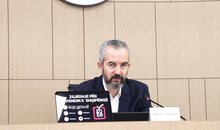
May 11, Celibashi: 109 extra ballots are found, we are conducting verifications
2025-05-17 14:39:41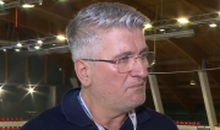


Green or yellow? This is the healthiest banana
2025-05-17 13:50:30


Berisha: The right of Albanians to vote as free citizens is our greatest goal
2025-05-17 13:03:20
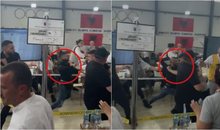
Rei Nozllin punched the secretary of CEAZ No. 30 in Kashar, he is left in prison
2025-05-17 12:41:43
Caught with cannabis, two young people arrested in Tirana
2025-05-17 12:27:02
Topalli accuses of massive manipulation of votes from the Greek diaspora
2025-05-17 12:13:57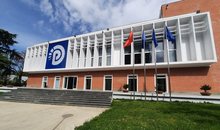
Vote counting from Greece, PD: Not to be included in the final result
2025-05-17 11:59:01

Ukraine peace talks, Macron: Faced with Putin's cynicism, Trump will react
2025-05-17 11:18:54
Criticism of Vjosa Osmani, Macron: I hope that dialogue will resume next week
2025-05-17 11:01:28
Dreams won't come true for others.
2025-05-17 10:41:56
